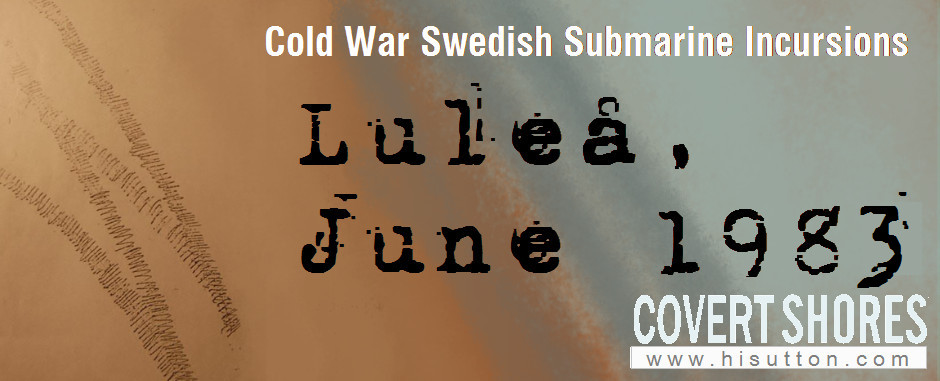

This article would not be possible without info from others. Special thanks to Lennart Alvhult for letting me tell his story. Any errors are solely the responsibility of the author. Feedback and additional info welcome.
Analysis of Swedish submarine incursion- Luleå 1983
At around 1100 hrs on 20th June 1983 Lennart Alvhult and his wife pulled up with their bicycles near the air base at Luleå in the north of Sweden. They knew a short route through the forest to the shoreline where they planned to swim and relax on the secluded sandy beach. In 1983 it was an inaccessible spot and the Alvhults expected to have the beach to themselves.
As they strolled along the beach, heading northeast from the direction of the air base, they came across unusual track marks on the beach. It was about 1130hrs and the tide was high. It was high tide and the track marks extended into the sea and were still visible below the low-tide line (the tidal variance being approximately 0.2m). The tracks showed that something had driven up the beach, stopped and then reversed back down, turning as it did. At the point where the vehicle had stopped, footprints were visible. The footprints were on the left-hand side of the vehicle and showed where someone had got out, moved around in the same spot and then got back in the vehicle. No tracks or footprints joined this set of prints.
The prints were right next to a strategically important air base and also next to a dredged channel leading into the port which was sometimes used by the Swedish Navy. Offshore near this location were underwater cables relating to the military installation – possibly hydrophones, possibly related to aircraft landing systems. The beach itself was one of the few open places for potential amphibious operations and provided direct access to the air base. We can hypothesize that in the event of a conventional start of World War Three the Russians would want to neutralize or seize the air base as part of their northern sweep through nearby Norway.
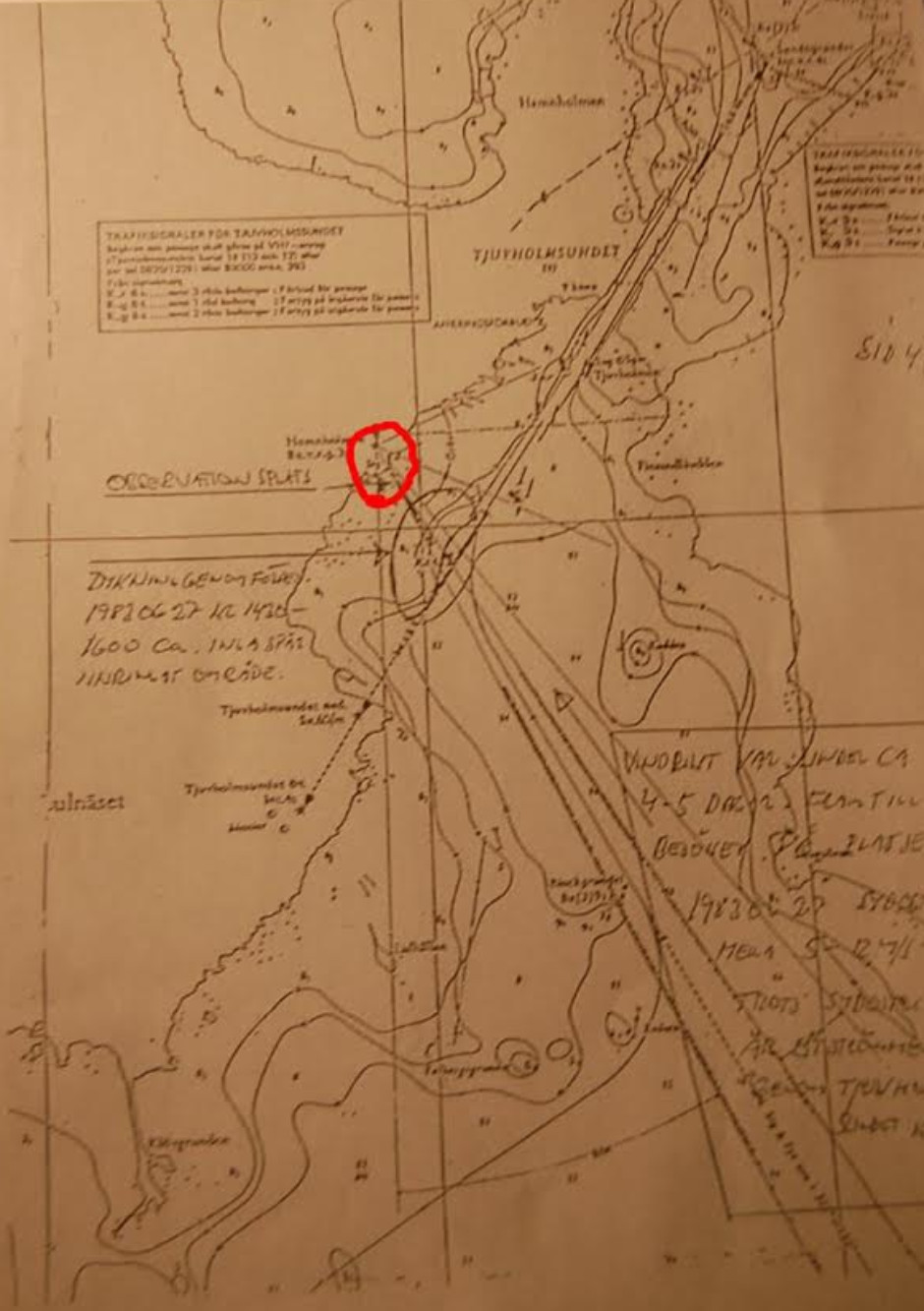
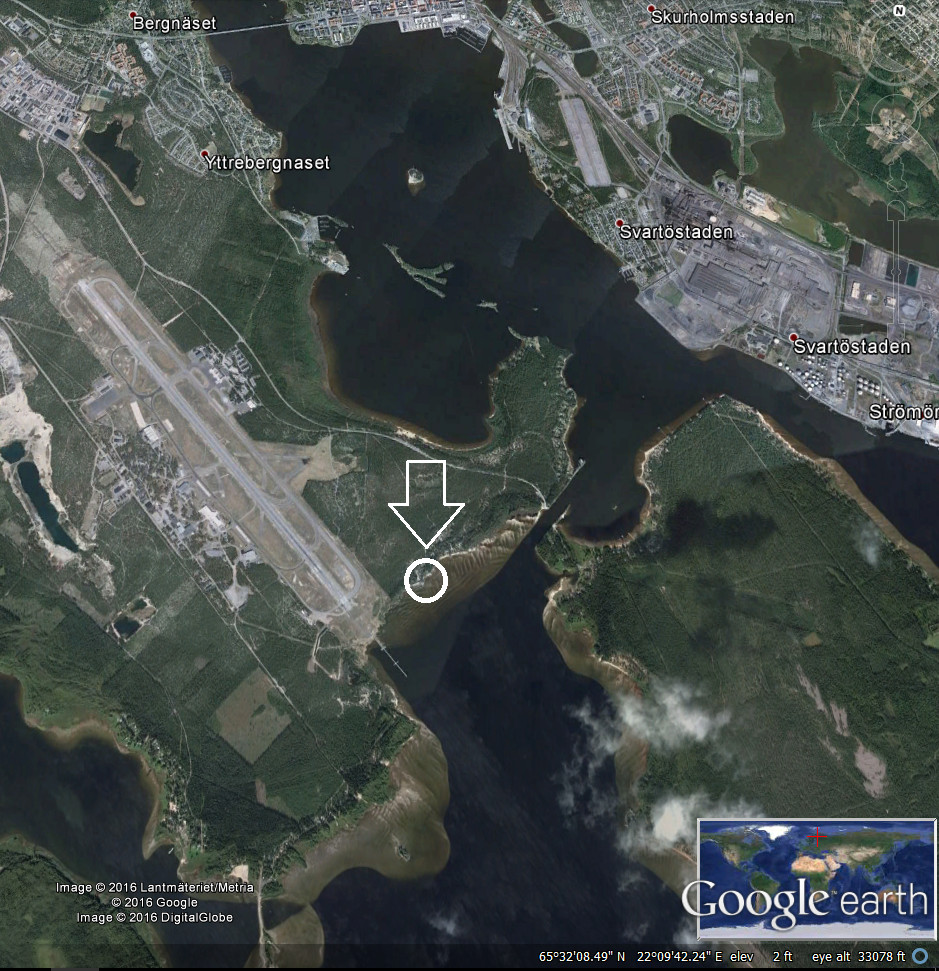
Learn EVERYTHING about Special Forces subsCovert Shores 2nd Edition. A world history of naval Special Forces, their missions and their specialist vehicles. SEALs, SBS, COMSUBIN, A-DYK, Sh-13, Spetsnaz, Kampfschwimmers, Commando Hubert, 4RR and many more.
Check it out on Amazon
The Alvhults had stumbled upon one of the earliest and most interesting of the famous Swedish Submarine Incursions of the Cold War. Throughout the 1980s there were many similar sightings, and there were in fact some others in general area that day. Some incidents lasted days or even weeks and involved numerous sightings. But because this incident is so early the witnesses were less likely to be influenced by prior evets, however unwittingly. The Swedish Incursions in the last few years remind us how easily people can allow themselves to interpret innocent sightings as part of a bigger picture. There is an element of ‘me too’ and attention seeking in some reports which undermines the seriousness of the genuine sightings. But when the Alvhults saw the tracks in 1982, they hadn’t heard of other tracked submersible events, and almost certainly never heard of the concept of a tracked submarine.
There had been one widely publicized submarine incursion nearly two years before. During a Swedish Naval Exercise in October 1981 a Russian Navy WHSKEY Class submarine run aground just outside the main naval base at Karlskrona in the south of Sweden. This was well within Swedish waters and essentially in the Swedish Navy’s back yard. Various excuses and alternative explanations have been put forward but both at the time and with the clearer vision of hindsight, it appeared to be a blatant spying mission gone wrong. The incident drew international attention but the Swedish inevitably had to let it go. The ‘WHISKEY on the Rocks’ incident set the backdrop for a series of submarine scares throughout the 1980s.
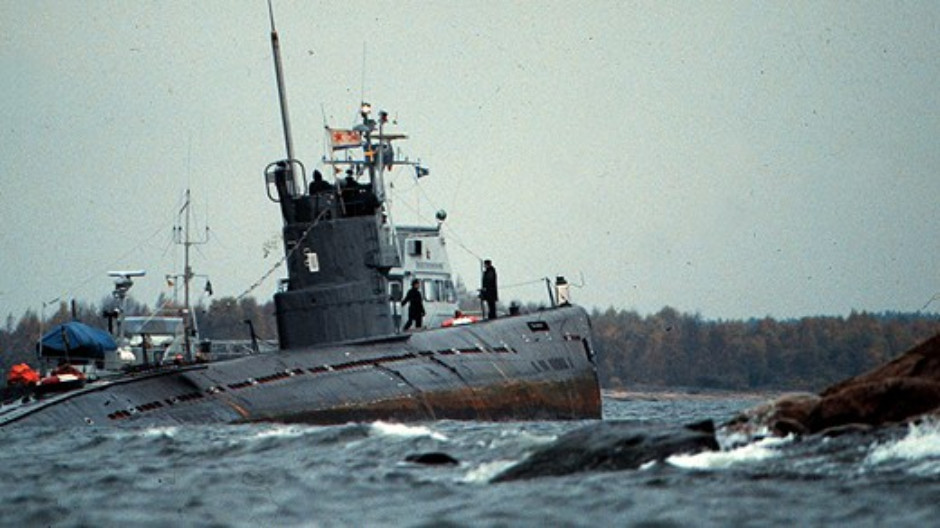
Back to June 1982. There were other sightings of frogmen/divers in the town that weekend. One report apparently pointed to a diver using a Diver Propulsion Device (DPV). After the weekend the Alvhult’s were still concerned enough with what they had seen that they contacted the Navy office in Lulea and reported it. An officer and photographer inspected the site but the marks had almost disappeared due to rain. They did sketch what they’d seen and write a report, which are the drawings used in this article.
Tracks
The witnesses re confident that the marks were made by a tracked vehicle. Each track was 25-30cm wide (~1ft) and were 1.5-2m wide overall (~5-6ft).
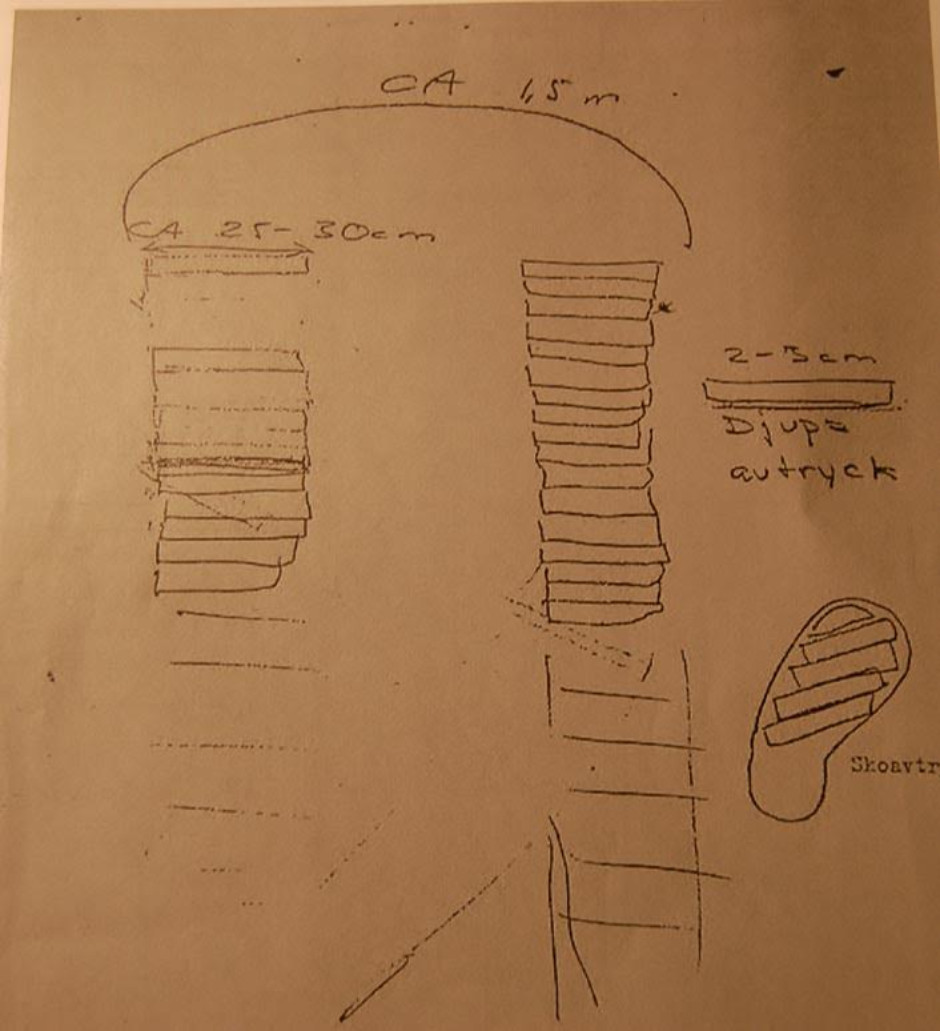
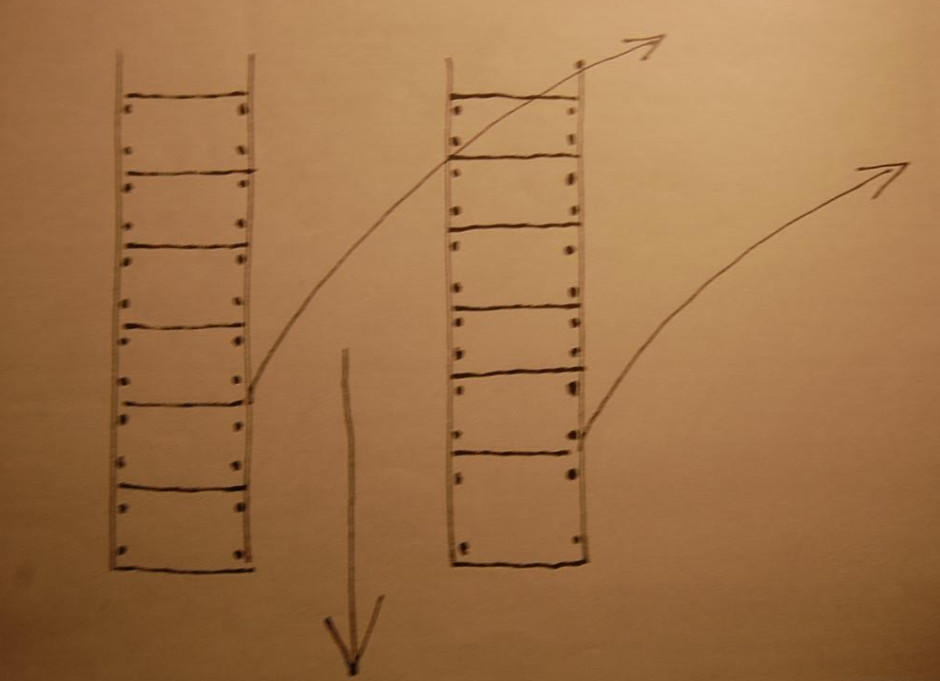
The tracks led up the beach, topped and then reversed down, turning as they did. This is significant because it tells us that the craft had a reverse gear. We might take that for granted but it might help identify it as candidates are considered.
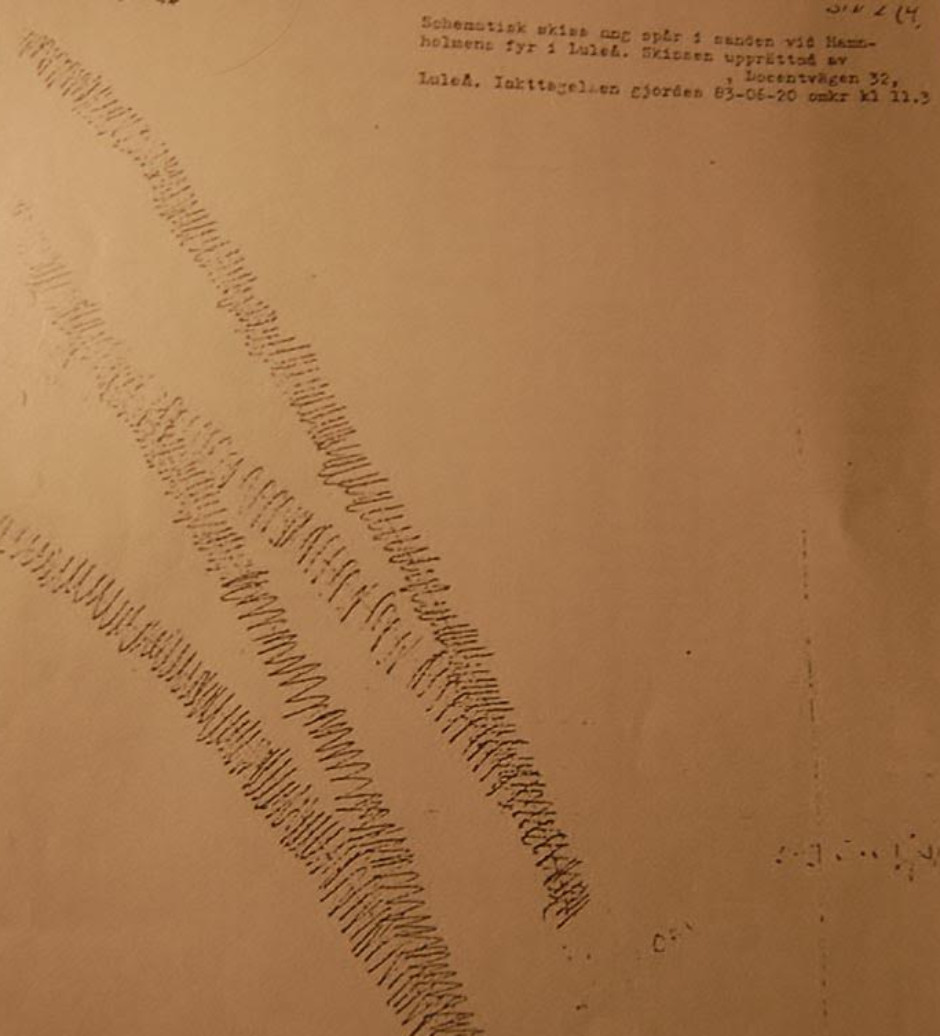
I do not know of any tracked submersibles that match the patterns.
Footprints
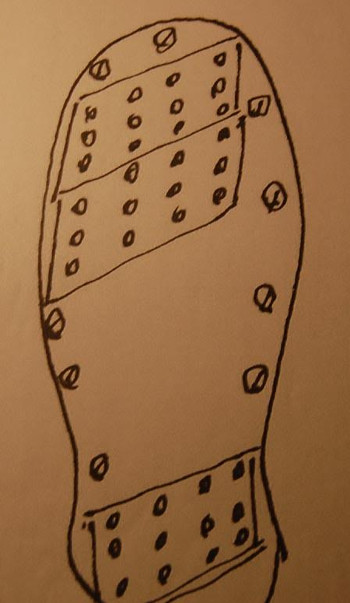 As they inspected the track marks the Alvhults noticed about ten footprints on the right-hand side of the vehicle (the left hand ide from their perspective). The footprints were described as clumsy and were very large, concentrated in one place. They did not go away from the vehicle. It appeared that someone had got out of the vehicle briefly, and then got back in again.
As they inspected the track marks the Alvhults noticed about ten footprints on the right-hand side of the vehicle (the left hand ide from their perspective). The footprints were described as clumsy and were very large, concentrated in one place. They did not go away from the vehicle. It appeared that someone had got out of the vehicle briefly, and then got back in again.
I have tried to identify the type of boots that made the print. One initial thought, from an expert I consulted, was that they might be some sort of metal diving boot which can have weights attached, and that the blocks in the middle might be rubber for grip. However weighted driving boots are associated with old fashioned diving apparatus and you would expect a ‘frogman’ of the 1980s to wear swimfins, or comparatively slim rubber plimsolls. Another possibility is that they are some type of army boot. The marks around the outside would be the hob-nails, still common in some armed forces at the time. I have not been able to match the boots to any country.
The fact that the footmarks did not go towards or come from the direction of the tree line rules out the idea that the tracked submersible was meeting an agent. And the fact that they were on the right hand side of the craft, away from the air base, makes it less likely that the occupant was taking photographs of the defenses or scenery.
This suggests that, if it were a military diver, that they probably got out to take soil samples which would allow analysis of whether the beach could support heavy vehicles like tanks.
Another suggestion would be that the occupant merely wanted to be able to say that they stood on Swedish soil.
We won’t know, but it does point to one interesting aspect of the vehicle. The occupant could not, or did not want to exit the craft while it was in the water. This implies that it is a dry submersible. You would think that a diver conducting a beach recce would prefer to exit the craft while it is still submerged and swim ashore, crawling the last few yards to take the samples. This would minimize the chances of detection. However, if the submersible was a dry sub without a lock-out capability, they’d have to drive it ashore and get out.
Making sense of the timing
We have to ask ourselves why a foreign Special Forces or elite unit would choose a June morning for a beach recce? Common sense would suggest that these types of missions are least likely to be detected if conducted at night. Being so close to the arctic circle, nighttime is however limited to an hour of twilight per day at this time of year so there would have been very little opportunity to conduct the operation under the cover of darkness. So whenever the diver vehicle came ashore, it would have been fully visible to anyone in the vicinity, had they been there. The optimum time for special forces missions like this would typically have been in the winter when the nights are longest. However, again this is near the arctic circle so different rules may apply. It is true that the winter nights are extremely long (inverse of the summers) but they feature a full moon which can reflect off the snow rendering visual detection more easy. Additionally, the waters are extremely cold and freeze over from January to April. These conditions are perilous for diving and require special training and equipment, and very few combat swimming units were able to operate in them in 1982.
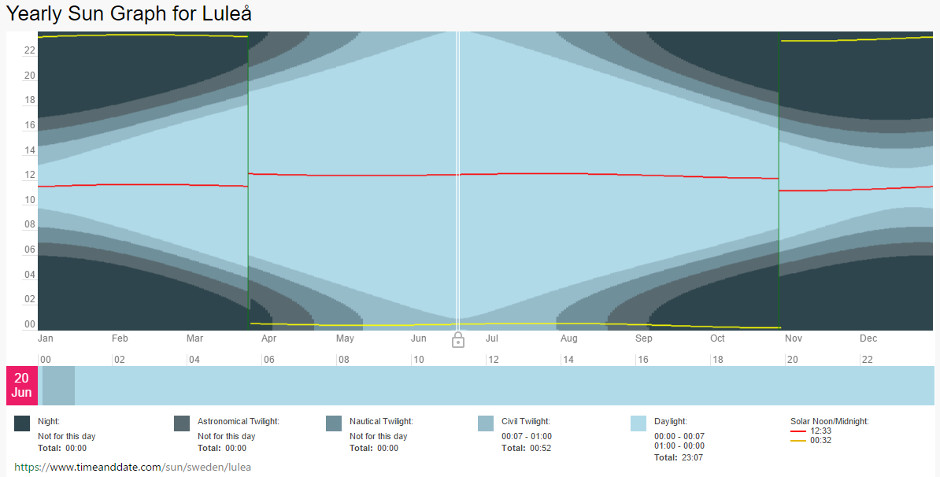
Good site for daytime data: timeanddate.com
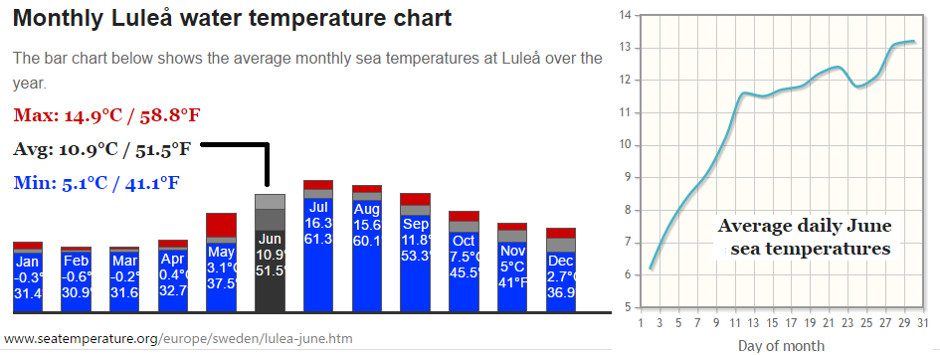
Good site for sea temperature data: seatemperature.org
A June operation is not out of the question therefore, especially if it was dictated by other considerations such as availability of men and host vessels.
Devil’s advocate
We have to consider the possibility that the tracks could have been left by something other than a submersible. The Alvhult’s had wondered whether they were left by someone using a snowmobile on the beach. Those tracks would have been much smaller and closer together however. Another vehicle which was relatively widely available was the classic BV202 amphibious tractor. This would be a perfect candidate except a) the relative width of the individual tracks does not match and b) Lennart Alvhult’s own research has suggested that none were used in the area at that time.
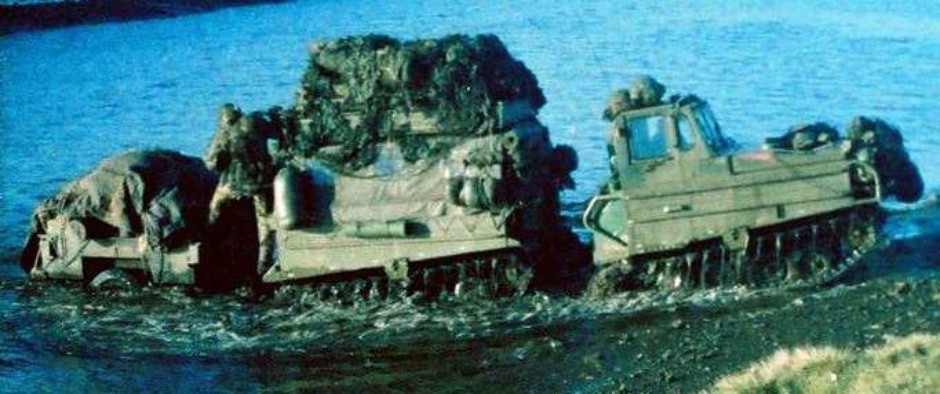
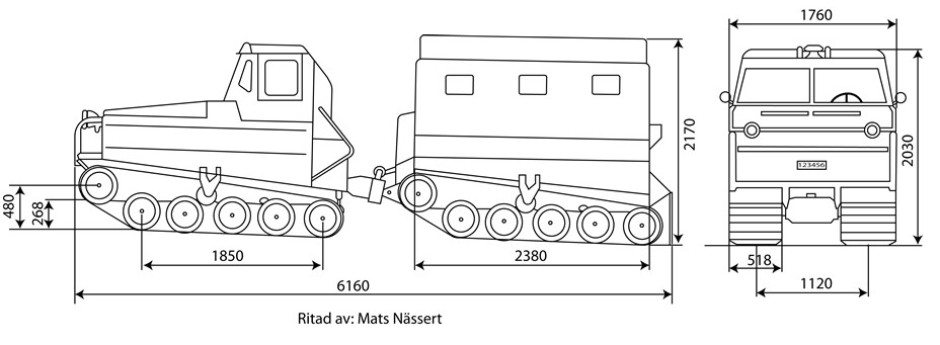
If the Lulea incident as the only one from the Cold War Swedish Submarine incursions involving tracks I would be tempted to conclude that some sort of vehicle generally similar to the BV202 was to blame. However, after this date tracks appeared in several locations on the sea floor where they could not have been made by an amphibious vehicle. And the claims are made by the Swedish navy so have some credibility. However, according to the research of Ola Tunander, no two sets of tracks or marks left on the sea floor match each other. Very confusing.
A brief history of tracked submersibles
Tracked submersibles are extremely rare. Actually we can cover most of them right here. The earliest and most famous type was probably the German Seeteufel. Designed at the end of World War Two, the tracks were intended to allow it to launch and recover itself from beaches. This was because the midget submarines being used by Germany (the Molch, Neger, Marder, Biber…) all required specialist trailers which limited the locations from where they could operate and made them vulnerable to air attack. Counterintuitively the Seeteufel reportedly had decent performance and appeared promising. The allied advance however ensured that the newfangled Seeteufel did not see active service.
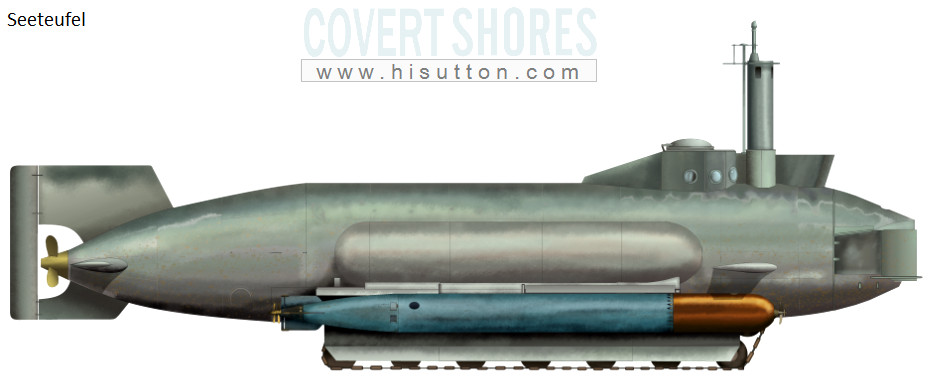
In 1950 American inventor Halley Hamlin built a small tracked submarine. The design featured very thin tracks which allowed it to self-launch like the Seeteufel. Although it was at least examined by the Navy, the concept never caught on.

By 1958 people were beginning to experiment with Remotely Operated Vehicles (ROVs) which are crewless submersibles. The US Navy built the RUM (Remote Underwater Manipulation) which was a traced ROV with a manipulator arm. The family of large ROVs was still being developed in the late 1960s. The RUM-II was designed to operate at up to 2,400m (7,900ft), far deeper than regular submarines. Each track was driven by a 15.6KW DC motor which allowed it to be steered by varying the power to each. It was also equipped with cameras, underwater spotlights, echosounders, search active sonar (250m), passive sonar, compass and an obstacle avoidance sonar.
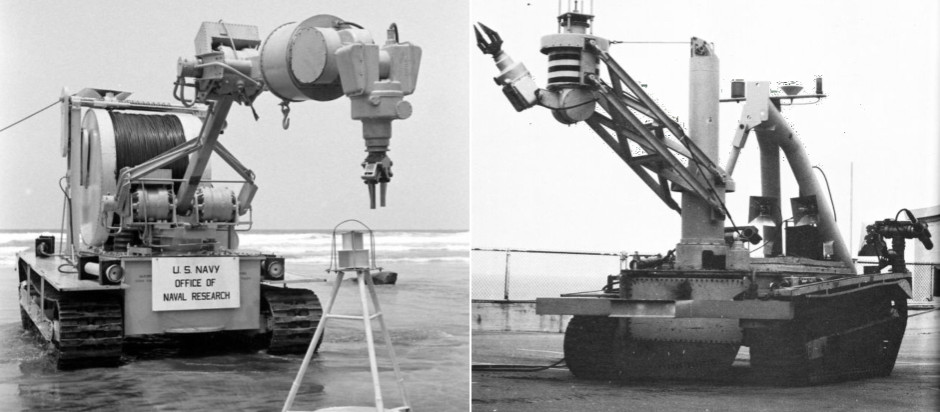
The Russians also developed tracked ROVs, notably the MTK 200 Submersible which weighed 3.5 tons and could dive to 500m. It was in service in 1987.
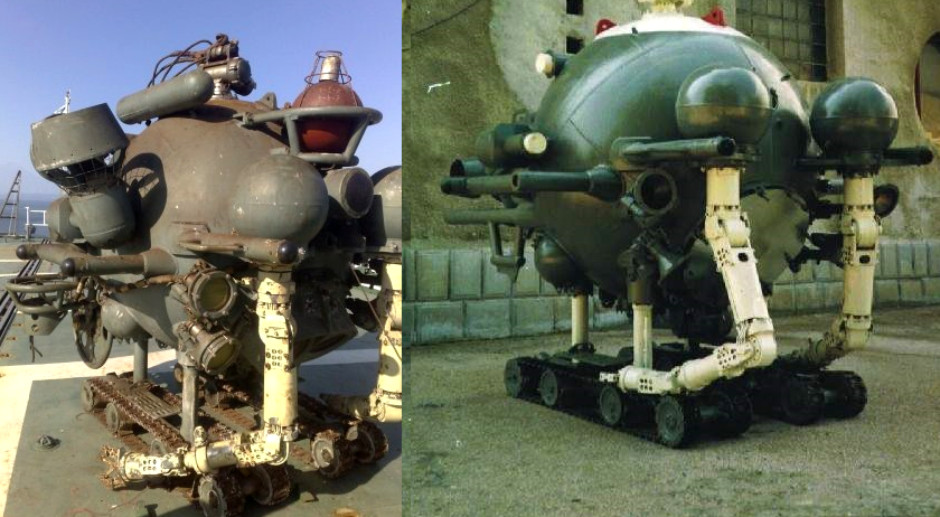
Source: cyberneticzoo.com
The British built Tramond Model-250 was used for undersea gold mining in the late 1980s.
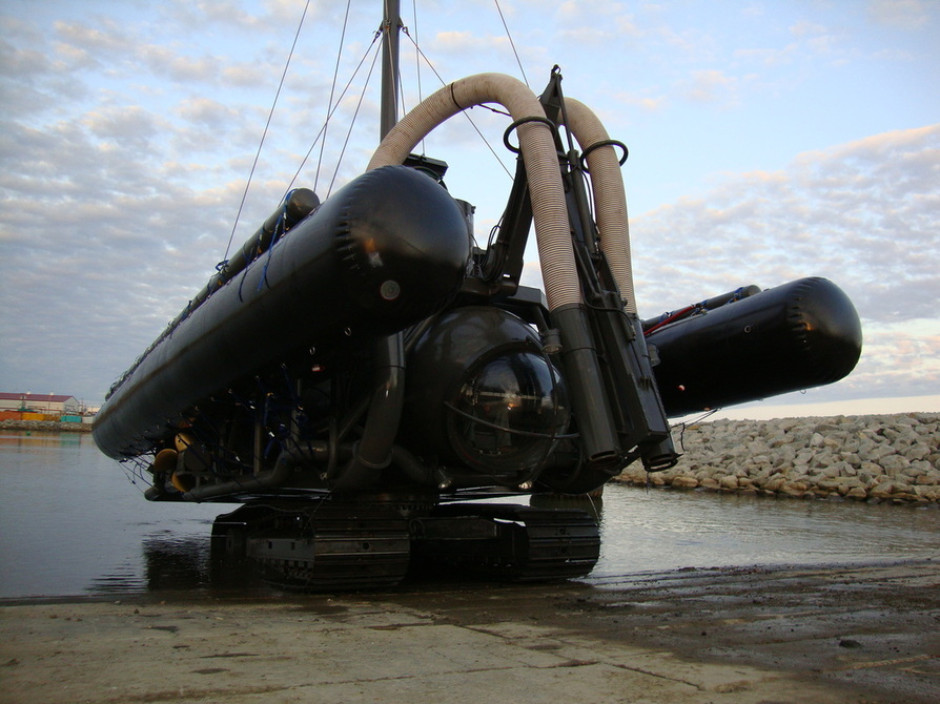
There were other commercial tracked ROVs, often for cable laying operations. Today there are many smaller types in service.
Conclusion
It does appear most likely that the marks were left by some sort of manned tracked submersible which is unknown in public sources. It was probably a dry-sub as opposed to a wet-sub like most Swimmer Delivery Vehicles (SDVs).
Related Articles

 Naval Spetsnaz in Hybrid Warfare (Russian SDVs and DPVs)
Naval Spetsnaz in Hybrid Warfare (Russian SDVs and DPVs)

 Narwal / Orca Dry Combat Submersible (UWTG)
Narwal / Orca Dry Combat Submersible (UWTG)


 TorpedoSEAL Diver Propulsion Device
TorpedoSEAL Diver Propulsion Device

 Triton-NN Submersible Boat
Triton-NN Submersible Boat

 Polish Blotniak SDV
Polish Blotniak SDV

 Soviet Project 1015 'SPLC' Special Purpose midget submarine
Soviet Project 1015 'SPLC' Special Purpose midget submarine

 Project 09852 Belgorod Special Mission submarine (spy sub)
Project 09852 Belgorod Special Mission submarine (spy sub)















 World survey of AIP submarines
World survey of AIP submarines

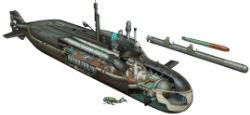 Piranha Class (LOSOS) midget sub
Piranha Class (LOSOS) midget sub

 Russian Losharik spy sub
Russian Losharik spy sub

 Project 1910 UNIFORM Class deep diving spy sub
Project 1910 UNIFORM Class deep diving spy sub

 Russian X-RAY Class spy sub
Russian X-RAY Class spy sub

 Maritalia GST-23+ Midget Submarine
Maritalia GST-23+ Midget Submarine


